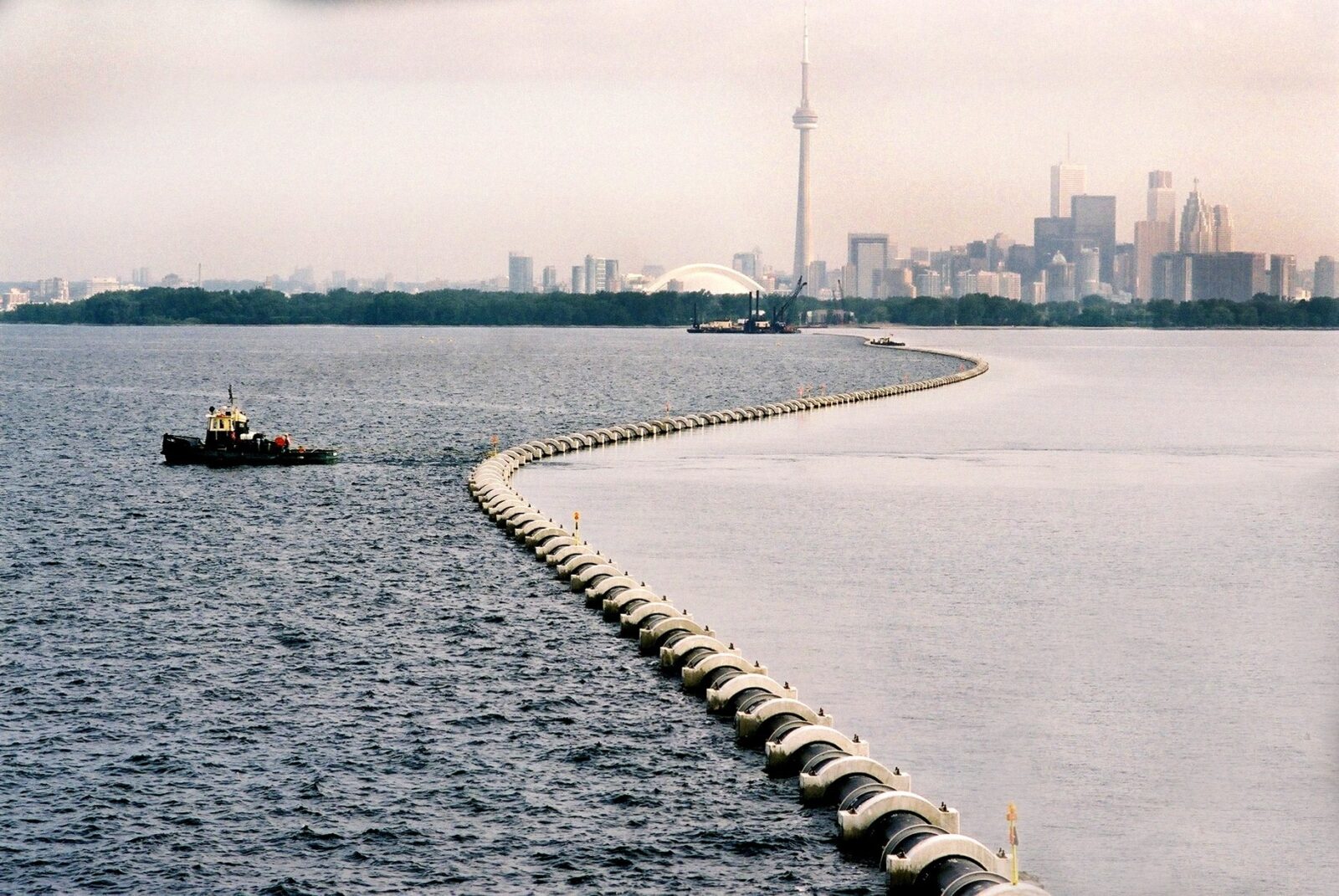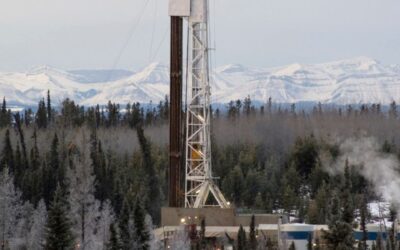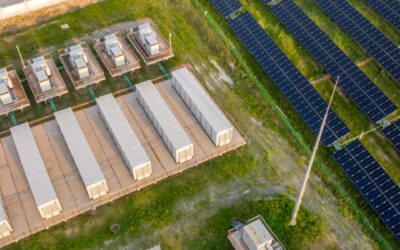Not only is there a vast reservoir of heat right beneath our feet, but we also let vast amounts of heat escape that we’ve already gone to the trouble of generating. By building thermal energy networks that capture and circulate these abundant heat sources, Canada could affordably heat and cool its buildings without contributing to the overheating of the planet, all while taking the pressure off grid expansion.
The Canadian Climate Institute’s recent report Heat Exchange found that in order to reduce building sector emissions to achieve net zero by 2050, a shift in how individual buildings are heated and cooled must occur. Much of this shift will involve transitioning from gas burners and furnaces to highly efficient electric heat pumps—except where even more efficient local alternatives such as thermal energy networks are available.
Thermal energy networks are not new—they already meet about 3 per cent of Canada’s total heat demand—but they’ve seen renewed interest due to technological improvements, the imperative of addressing climate change, and the volatility of fossil fuel prices, so are becoming increasingly popular around the globe.
So what exactly are these networks? And why are they such a potential game-changer in the Canadian context?
What is a thermal energy network?
Ever wondered how multiple buildings can efficiently share heating and cooling? Enter the thermal energy network—a sophisticated system where multiple buildings tap into a thermal energy source and then share it around via a series of interconnected underground pipes.
Sources of thermal energy vary—from drawing heat from the earth through geothermal heat pumps to harnessing waste heat from industrial processes, sewage, or natural bodies of water.
Thermal energy networks fall into two main categories, district energy and networked geothermal systems.
District energy systems typically generate thermal energy centrally—often at industrial facilities—and distribute it through underground piping to residential and commercial customers. These established systems have served communities for decades, providing heat, cooling, or both to entities like universities and neighborhoods. As of 2022, district energy systems accounted for 9 per cent of global final heating demand.
Networked geothermal systems use ground-source heat pumps to provide heating and cooling to connected buildings via a shared underground loop. Heat pumps tap into the earth’s constant temperature through shallow boreholes. This system uses distributed sources of heat rather than one central source.
Where are they working?
Today, more than 200 district energy systems are operating in Canada. There is, however, significant room for further growth, with seven out of ten Canadians living in dense enough population centres to be part of a thermal network. These networks have worked dependably for decades, not only here in Canada but around the globe.
Seven out of ten Canadians living in dense enough population centres to be part of a thermal network
The projects in operation use a variety of energy sources, including:
- Natural-gas-fired boilers: In Markham, Ontario, a city-owned thermal energy utility, Markham District Energy, uses gas to power energy efficient boilers that produce and then distribute heat through underground piping, providing energy services to 240 buildings.
- Lake water cooling: Elsewhere in Ontario, Enwave owns and operates the Deep Lake Water Cooling system, which uses water from Lake Ontario to moderate the temperature of connected buildings, avoiding 13,500 tonnes of carbon emissions each year. They are now expanding the system to cool more buildings within Toronto’s downtown core.
- Waste heat from sewage: On the West Coast, False Creek Neighbourhood Energy heats over 13,000 homes and businesses in Vancouver and continues to expand, with heat from waste sewage providing 70 per cent of the overall energy needs of the system.
- Biomass: Teslin in the Yukon uses low-grade wood waste from various sources for their district energy system powered by biomass boilers.
Internationally, thermal energy networks are even more popular, with countries like Denmark using district heating in more than half of buildings, with a goal to have no households heated by gas after 2035.
Why are thermal energy networks important to Canada’s energy transition?
The advantages of thermal energy networks are becoming increasingly recognized. While they’re already hugely popular in Europe, momentum for thermal energy networks is rising in North America as the policy landscape shifts and not just countries but cities and municipalities make net zero pledges.
Here are some of the benefits thermal energy networks offer:
- Flexibility: Their potential is not tied to any specific energy resource, as these systems can use a variety of renewable energy sources depending on local conditions, making the systems extremely flexible. For instance, networks can use natural thermal reservoirs like lakes and rivers, like Toronto’s Deep Lake Cooling system. Additionally, in many locations, geothermal heat pumps can tap into the earth’s stable temperatures using shallow boreholes, thus reducing reliance on fossil fuels and lowering carbon footprints across the community.
- Retrofit potential: Thermal energy networks that are currently powered by fossil fuels (as over 90 per cent of global district heating networks are) can also be retrofitted to run on clean sources without requiring infrastructure changes for connected households or businesses. Creative Energy, which has heated 45 million square feet of Downtown Vancouver since 1968, is doing just this by replacing existing natural gas boilers with new, efficient all-electric boilers—reducing their annual emissions by 38,000 tonnes.
- Energy efficiency: Both central and networked thermal energy networks are extremely efficient. In centralized heating systems, thermal energy networks are inherently more efficient than traditional individual boilers and furnaces. By consolidating heating operations, thermal energy networks optimize energy use and minimize waste, enhancing overall energy efficiency.
- Reliability: Using stable heat sources, thermal energy networks can provide consistent heating and cooling, less vulnerable to supply disruptions and fuel price spikes.
- Cost savings: For centrally connected homeowners, district energy systems can avoid the upfront and maintenance costs of in-home heating equipment.
What can Canada do to enable uptake?
Despite their promise, widespread adoption of thermal energy networks in Canada faces both regulatory and financial hurdles. Financial barriers can hinder their adoption, with high upfront costs but lower operational costs over a longer lifespan. Current regulations often favour traditional heating methods, hindering the deployment of thermal energy networks. Policy interventions and financing, however, can help unlock their potential, as we outline in our Heat Exchange report.
Provincial governments, municipalities, and regulators can all accelerate the uptake of thermal energy networks. As these networks are site-specific, provincial or municipal governments can produce energy roadmaps to assist in planning for their development by identifying where these systems can be built. As a next step to energy planning, developing clean heat plans and acts such as the one passed in Germany can oblige municipalities and cities with large populations to consider the role of heating networks in future heat supply. Additionally, updating utility obligations to serve and directing regulators to consider alternatives to replacing or extending gas pipelines can also make it possible for utilities to provide energy services with thermal energy networks.
By expanding the use of thermal energy networks, Canada has an opportunity to leverage existing heat sources, existing infrastructure, and a highly skilled workforce to transform how we heat and cool our buildings, while also mitigating climate change.
Nikhitha Gajudhur is a research associate in the Canadian Climate Institute’s mitigation research stream.







